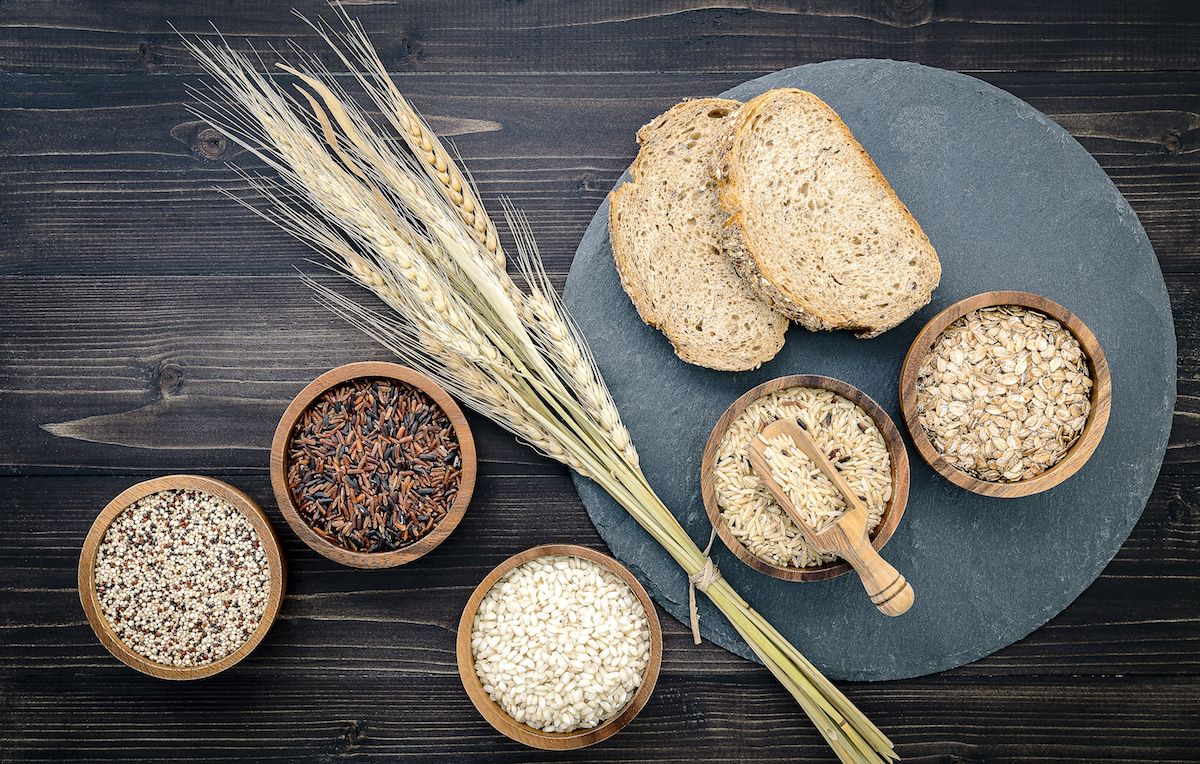Grains are one of the most important food sources worldwide. It’s estimated that people began eating grains more than 75,000 years ago. Those grains — such as einkorn and emmer, the ancestors of modern wheats — were harvested as they grew wild near the banks of rivers.
Ancient people prepared and ate grains in much the same ways we do today — for example, making flours for bread-type foods and steaming rice. Today, grain foods continue to be versatile ingredients in cereals, breads, pastas, snacks, salads, stews and much more.
September is National Whole Grains Month, so let’s take a look at some frequently asked questions regarding whole grains.
What is a whole grain?
Whole-grain kernels have three major parts: the bran, the germ and the endosperm. The bran and germ — which contain fiber, vitamins and minerals — are removed when grains are refined, leaving just the starchy endosperm for refined “white” flour and products. When grain products are labeled “enriched,” that means that manufacturers have put back some of the nutrients that were removed in the refining process. However, not all the nutrients are put back, and even when they are, often they are not returned in the same amounts or proportions as when they were in the original grain.
Why should we eat whole grains?
Evidence shows that eating a diet rich in plant foods — including whole grains, vegetables, fruits and beans — can help reduce cancer risk. According to the American Institute for Cancer Research (AICR), there is strong evidence that eating at least three servings of whole-grain foods per day decreases the risk of colorectal cancer. Consuming whole grains also has been shown to promote cardiovascular health and reduce the risk of type 2 diabetes. Fiber — found in whole grains as well as other plant-based foods — also reduces colorectal cancer risk. The AICR recommends eating at least 30 grams of fiber per day. Most Americans do not meet the recommendations for daily whole grain or fiber intake.
What is a serving of whole grain?
One ounce of whole grains equals a serving. This is equivalent to about ½ cup of cooked grains, such as pasta, rice or oatmeal, or usually one slice of bread.
Do whole grains or gluten cause inflammation?
Many studies show that whole grains can actually reduce inflammation in the body. People with celiac disease or gluten intolerance should avoid gluten, but there is no evidence that gluten is inflammatory for individuals who do not have an intolerance. The good news is, if you do have to avoid gluten, there are plenty of gluten-free whole grains, including rice, quinoa, corn, buckwheat (which, despite its name, does not belong to the wheat family), amaranth, millet, sorghum and some oats.
Many diets claim we need to avoid or limit wheat, grains or carbohydrates. Should we cut back on carbs for better health or to manage weight?
Eating too much of anything can contribute to weight gain. It’s a good idea to be mindful of whole-grain products that contain a lot of added sugar or saturated fat (extra calories), and keep portion size in mind. However, wheat and grains do not specifically contribute to weight gain. In fact, we know that many people around the world live on grain-based diets and eat more wheat than Americans, but have much lower rates of obesity. The fiber in whole grains can also help you feel fuller throughout the day.
Grains are a source of carbohydrate, which does turn into sugar as it is digested and can be stored as fat. Some diets, such as the ketogenic diet, promote a diet high in fat and low in carbohydrates so that your body burns fat for fuel instead of carbohydrates. However, if your overall calorie intake remains the same, your body will not use your stored fat for energy any more or any less on this type of diet than if your diet was high in carbohydrates.
What about phytate, or "antinutrients"?
Phytate (phytic acid) is a compound found in grains and beans. It was once suggested that this compound was an “antinutrient,” because it can bind to minerals such as zinc and iron, or prevent calcium absorption, stopping your body from utilizing these nutrients and increasing the risk of osteoporosis.
However, according to research, this effect appears to happen only when very large amounts of phytates are consumed along with a nutrient-poor diet. In addition, cooking or soaking the grains disables the mineral-binding ability of phytic acid. Consuming whole grains has not been shown to have any adverse effect on nutrient status. Phytic acid may even be beneficial for health, with potential roles in protecting against cancer and other diseases.
Nutrition Tips for Cancer Patients and Survivors
Our board-certified dietitians at Roswell Park are part of your healthcare team and can help you make the best food choices during treatment or recovery.
Learn MoreDo all of the grains we eat have to be whole grains?
No. While at least three servings of whole grains per day is the optimal goal, research suggests that increasing your current whole-grain consumption by one serving can lead to positive health benefits.
To celebrate National Whole Grains Month, start small with some of these steps:
- Keep learning. Learn about different types of whole grains, how to spot a whole grain, new recipes and more with information from the Whole Grains Council.
- Make simple swaps. Make a sandwich or wrap with whole-grain bread or whole-grain tortilla; choose whole-grain pasta or brown rice for dinner one night; find a whole-grain cereal you like for breakfast; or swap out some snacks for whole-grain options, such as popcorn or whole-grain crackers.
- Find flavor. Look for creative ways to try new grains and add whole grains to your day with recipes like these:
- Try Aztec Amaranth Cocoa Porridge for breakfast.
- Make a pot of Tex Mex Sorghum Chili and have it for lunch during the week.
- Mix it up with Freekeh Rice Wraps, Apple-Sage Wild Rice Stuffing or One Pot Mediterranean Orzo.


